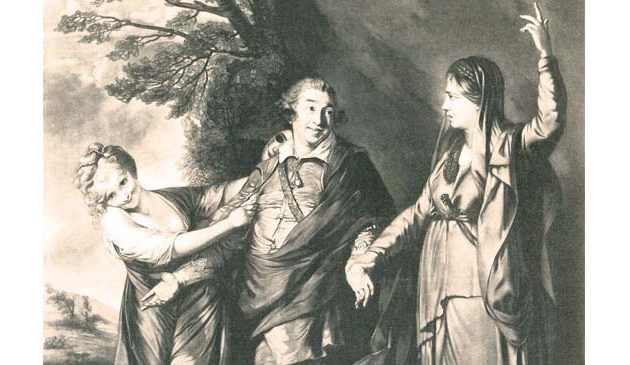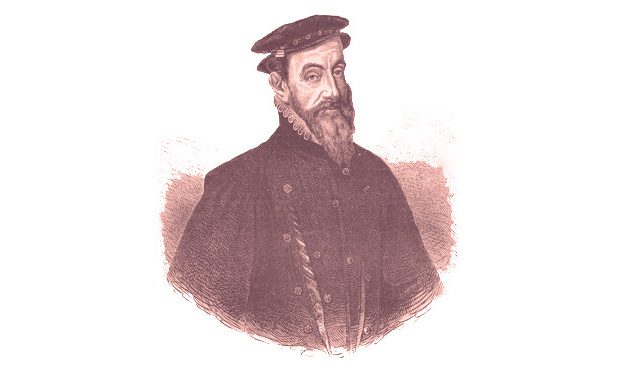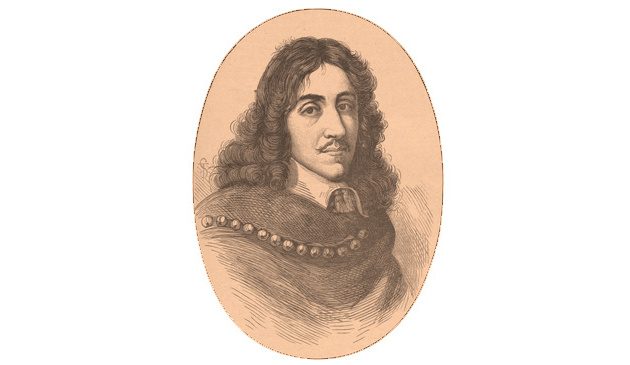Vauxhall Gardens and Jonathan Tyers

This is the scene confronting visitors as they arrived through the narrow hallway of the Proprietor’s House into Vauxhall Gardens. The Grand Walk stretches into the distance, a globe lamp hanging from each tree. On the right is the Grove, with the tall structure of the Orchestra, which was rebuilt in this style for the 1758 season. In the distance is a two dimensional tromp l’oeil wooden obelisk decorated by Francis Hayman. Part of the statue of Handel can be seen on the far right.
In the first few years under his management little changed in the way the gardens operated but Tyers began experimenting with different types of special events. That led in June 1732 to the first major occasion, the Ridotto al Fresco, in conjunction with the impresario John James Heidegger. Entry was one guinea, making it accessible only to the wealthiest in society. One hundred armed soldiers provided security and the watermen of Westminster and Lambeth were employed for the night to ferry guests to the event, which lasted from 9 o’clock in the evening until four in the morning. Frederick, Prince of Wales attended with his entourage, as did over 300 of London’s crème de la crème, many of whom came masked or in costume. The event resulted in much useful newspaper coverage. The Prince of Wales, who was the landowner at Vauxhall, thereafter became a regular visitor and was provided with a private dining room. And wherever the prince went the public were sure to follow.
Music was an important element at Vauxhall, as entertainment as well as setting the tone of the evening. Music of different kinds was widely available to the average Londoner but not usually of a serious type and rarely of a high quality. Tyers initially employed a small band of wind players to entertain visitors.
For the 1735 season an octagonal building with a conical roof was constructed to house up to 30 musicians, which was always known as the Orchestra. This provided better acoustics, allowed Tyers to increase the number of players, and helped to attract the best musicians to the gardens.
Tyers increasingly forged working partnerships with London’s artistic community. A staple of the orchestra’s repertoire was Handel’s concertos of which “his Harmony has so often charm’d even the greatest Crouds into the profoundest Calm and most decent Behaviour” according to the Daily Post of 1738. Tyers generously supported the composer and in 1740 Handel composed Hornpipe compos’d for the Concert at Vauxhall, the only work he is known to have written specifically to be played at a pleasure garden.
The sculptor Henry Cheere recommended his young French assistant, Louis-François Roubiliac, to Tyers with the comment: “employ him, and he will produce you a fine statue”. In 1737 Tyers commissioned Roubiliac to create a statue of Handel, the young sculptor’s first important commission. The finished work, made from one piece of Carrara marble, portrayed the composer in informal working clothes and pose that was said to be an exceptionally accurate likeness. It was installed at Vauxhall in 1738 and originally set in a large alcove. It was both unknown for a living commoner to be so honoured, and highly unusual for the subject of a statue to be in everyday costume. It was both remarkable and shocking and became a talking point and a major attraction. For Tyers it was a masterstroke, attracting visitors and establishing the gardens, and him personally, as sponsors of the arts. The statue is now owned by the Victoria & Albert museum.
Other composers whose work was favoured at Vauxhall included Thomas Arne, John Potter and John Stanley. Arne, then bandleader at the Drury Lane theatre was musical director at Vauxhall from 1745. He is best-known today as the composer of Rule! Britannia. Unlike the London theatres, where Italian singers dominated, Tyers and Arne supported local talent.
Arne introduced ballads into Vauxhall as a popular part of the repertoire, also published as ‘Vauxhall songbooks’ and in periodicals. Many were in an English pastoral and romantic style from the English folk tradition but with Italian influences, becoming a genre known as ‘Vauxhall song’. Hundreds of songs by many composers and lyricists of the time were written for, and first sung at, Vauxhall, including some by Johann Christian Bach and Tyers’s son Thomas. Other songs were of a patriotic nature based on current events such as the Seven Years War and the Jacobite Rebellion.
One of the major events of 1749 was the celebrations in St. James’s Park to mark the anniversary of the end of the War of Austrian Succession. A great firework display was arranged and Londoners flocked to the event. Handel composed Music for the Royal Fireworks to accompany the display. The whole event was largely funded by the Duke of Montagu, who enlisted Tyers to assist with the illuminations. In return, a public rehearsal of Handel’s musical accompaniment was held at Vauxhall a week before, performed by at least 100 musicians. Twelve thousand people were reported as coming to the event, at an entrance fee of two shillings and six pence, with over 1,000 carriages passing through the turnpike at Newington Butts. It was said that the number of people travelling by road to Vauxhall across London Bridge was so great that no carriage could pass for three hours.
Vauxhall Gardens was managed by Jonathan Tyers at an important time in British art. During that period, for the first time, the work of artists could be easily appreciated by the public, not only at Vauxhall but with the establishment of the Foundling Hospital, effectively London’s first art gallery, the Society of Artists, and the Royal Academy. Tyers used art for commercial purposes but he also became one of the greatest patrons of the arts of his generation.
At some point, the paths of Jonathan Tyers and the artist William Hogarth crossed. A story was later told that Hogarth had given Tyers the ridotto idea. That is possible, or perhaps the artist simply helped in facilitating the decoration of the gardens. It was a relationship of mutual benefit: Hogarth’s circle of artistic companions from his St. Martin’s Academy at Covent Garden, as well as Slaughter’s Coffee House, could provide unique decoration and attractions, while Vauxhall Gardens, with its large captive audience, provided a perfect exhibition space for works of art. In 1733 Hogarth received a gold medal “for your many past favours”, engraved with Tyers’s portrait, which gave him and ‘a coachful’ of six friends admittance to the gardens in perpetuity. Hogarth’s descendants continued to use it into the 19th century.


